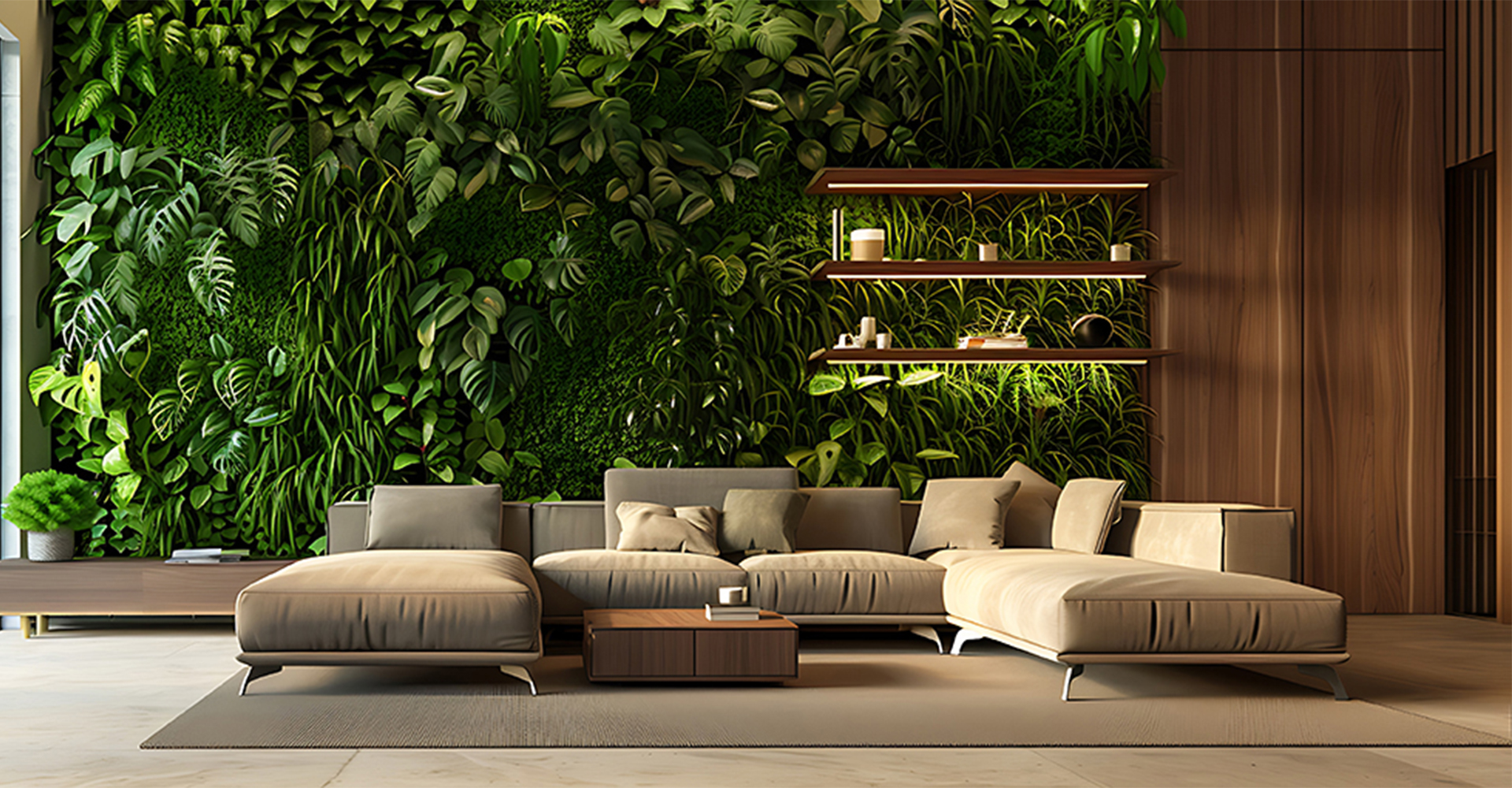Share This Story:
In a world where urban living and technology often disconnect us from nature, biophilic interior design has emerged as a solution to rekindle that bond. This design philosophy focuses on integrating natural elements into indoor spaces, creating environments that nourish the mind, body, and soul. But what exactly is biophilic house design, and how can you bring it into your home? This complete guide explores the concept, benefits, and practical ways to incorporate biophilic interior design elements into your living space. But, bringing biophilic design into your home goes beyond aesthetics; it positively impacts both physical and mental well-being. There are many biophilic design health benefits as well.
What Is Biophilic Design?
Biophilic design is an interior and architectural design concept that seeks to strengthen the connection between humans and nature within built environments. It incorporates natural materials, patterns, and forms, emphasizing light, greenery, and a sensory experience.
Effects and Benefits of Biophilic Design
Bringing biophilic design into your home goes beyond aesthetics; it positively impacts both physical and mental well-being. Here are some key benefits of biophilic design are reduced stress, increased creativity and productivity, improved mood and overall well-being, and improved air quality.
Elements and Principles of Biophilic Design
The key elements of biophilic design can be categorized into six main principles, which offer both aesthetic and functional benefits.
Environmental Features:
Incorporating natural elements such as water, greenery, natural lights for home, and materials like wood or stone enhances the sensory connection to nature.
Example: A small indoor water feature, potted indoor plants, or raw wooden furniture.
Natural Shapes and Forms
The biophilic design embraces these shapes over harsh, rigid lines.
Example: Choose furniture and decor items with curved, flowing forms, such as rounded tables or soft, arch-shaped shelves.
Natural Patterns and Processes:
Patterns found in nature, like fractals and spirals, can be reflected in textures, fabrics, and designs.
Example: Wall art or fabrics that feature organic patterns like leaves, waves, or honeycomb designs.
Light and Space:
Maximizing sunlight and creating a sense of openness is key to promoting a healthy indoor environment in biophilic design.
Example: Large windows, skylights, and light-diffusing curtains that allow natural light into the room.
Place-Based Relationships:
Incorporating regionally sourced materials, textures, or colors can create a connection between your home and the local ecosystem.
Example: Use locally sourced stone or wood for accent walls, floors, or furniture.
Evolved Human-Nature Relationships:
This principle focuses on recreating environments that evoke the comfort and security of natural settings.
Example: Nooks or spaces with natural elements like wooden beams, soft lighting, and earth-toned fabrics.
How to Incorporate Biophilic Design into Your Home
Incorporating biophilic elements can be easy and affordable. Here are some practical ways to bring nature into your home.
Use Natural Materials:
One of the easiest and most popular ways to incorporate biophilic design is to use natural materials like wood, stone, bamboo, or cotton.
Example: Choose natural, sustainable house materials like wooden furniture, stone countertops, or linen curtains that add a biophilic element, texture, and warmth to your space.
Maximize Natural Lighting:
Natural light is essential for both mental health and the visual appeal of your home. It helps maintain your circadian rhythms, boosts vitamin D production, and enhances the mood.
Example: Use sheer curtains, add mirrors to reflect light, and rearrange furniture to maximize sunlight.
Add Living Walls and Plants:
Plants are the cornerstone of biophilic design. A living wall or simply placing potted plants throughout your home can make a dramatic impact.
Example: Consider installing a vertical garden or filling empty corners with the best indoor plants for health, such as ferns, snake plants, or succulents.
Incorporate Natural Colors:
Earth tones like greens, browns, and blues can mimic the calming colours found in nature. Choosing these hues can evoke a sense of tranquillity associated with outdoor spaces.
Example: Paint your walls in soft, natural colours like sage green, clay, or sky blue to create a calming environment.
Use Water Features:
The sound of flowing water can evoke a sense of peace and calm, and water features add an auditory connection to nature.
Example: Install a small tabletop fountain or an indoor waterfall to bring the relaxing sound of water into your home.
Create Views of Nature:
Visual access to nature is a key aspect of biophilic design. If possible, arrange your home to provide direct views of gardens, trees, or landscapes.
Example: Position your work desk or seating area near a window that overlooks greenery or hang artwork that features natural scenery.
Embrace Natural Patterns:
Patterns found in nature, such as leaves, waves, and tree bark, can inspire your decor choices.
Example: Opt for wallpaper, fabrics, or rugs that feature botanical or organic patterns to echo nature indoors.
Open Up Your Space:
Open layouts allow light and air to flow freely, mimicking the openness of outdoor environments.
Example: Knock down unnecessary walls, open spaces, and use light, airy furniture to create a sense of expansiveness.
Conclusion
Biophilic interior design isn't just a trend; it's a lifestyle choice that brings nature back into our increasingly urbanized and tech-driven lives. By integrating natural materials, light, greenery, and organic forms, you can create a space that not only looks beautiful but also supports your mental, emotional, and physical well-being. Whether you are looking for biophilic luxury villas in Coimbatore or projects like Srivari Trisara by Srivari Group, adopting biophilic principles can transform any space into a peaceful, nature-inspired haven. So why wait? Start incorporating biophilic design into your home today and experience the soothing, rejuvenating effects of living closer to nature. Whether it's as simple as adding plants or as elaborate as a full redesign, your home will become a sanctuary that enhances your quality of life.



